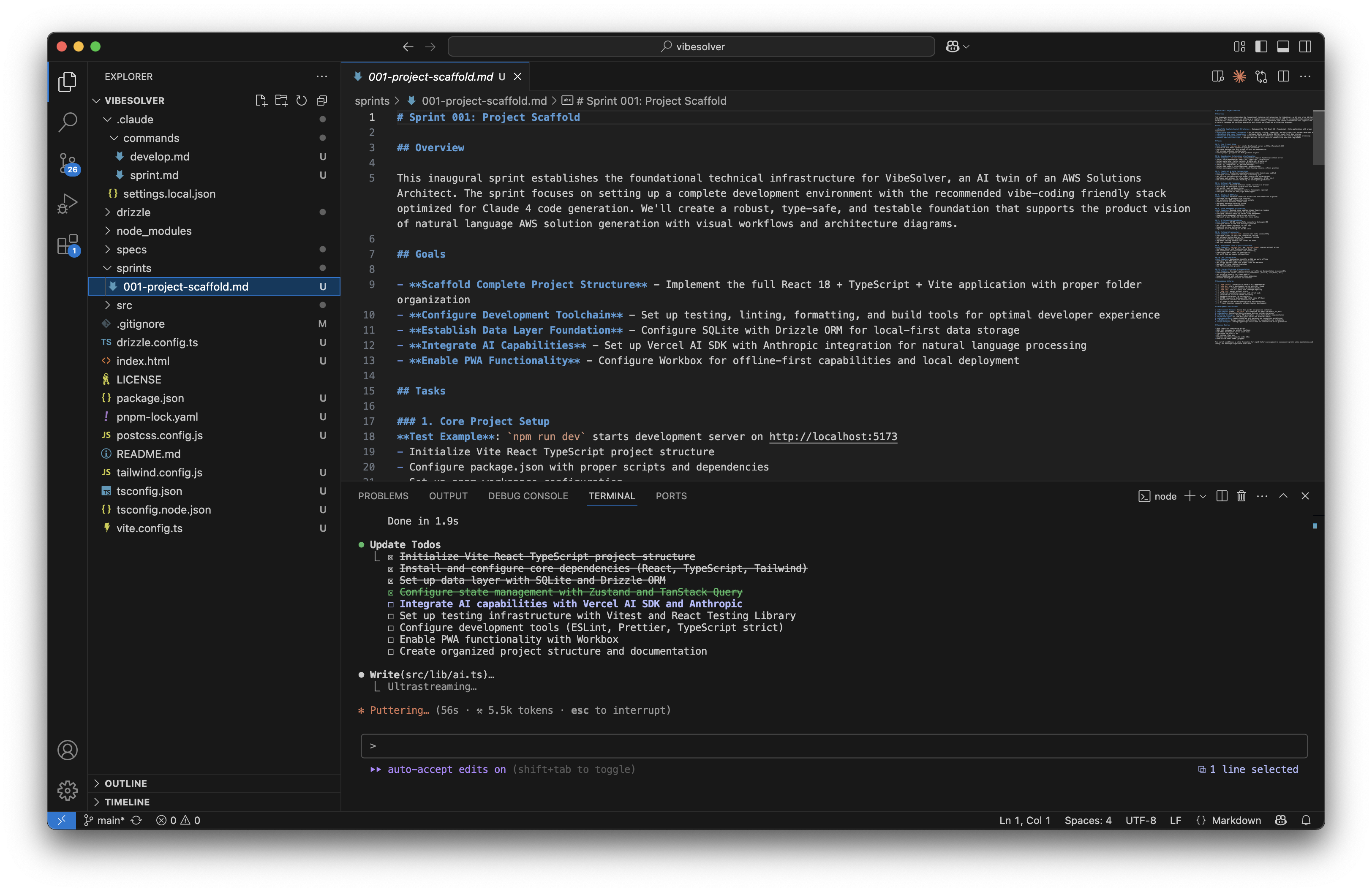
AWS Solutions Architecture Patterns: Building VibeSolver with AI-First Development
Scroll to explore
By the time I start writing this chapter, Claude 4 is launched. Claude Code has also been updated to integrate directly with VS Code. In order to evaluate the latest capabilities of the model as well as Claude Code, I decide to develop my next project using Anthropic API instead of Bedrock API.
I also want to make some modifications to my vibe coding approach.
Product Vision First: Instead of working from a comprehensive requirements and technical design specification, I want to start with a high level product vision first.
Vibe Friendly Stack: I also want Claude to recommend a technology stack that is vibe coding friendly.
Minimum Viable Sprint: Then I build on this vision and stack by developing the most essential features first.
Product Vision First
VibeSolver is AI twin of an AWS Solutions Architect. VibeSolver leverages its AWS cloud expertise to help customers reimagine what’s possible for their businesses and generates AWS solutions that drive business growth. Customers can use natural language to describe their business technology requirements. VibeSolver can understand these requirements and generate matching AWS solutions which follow the AWS Well-Architected Framework. VibeSolver enables customers to as easily use natural language to query, change, and deploy these solutions. VibeSolver is also able to visualize solutions as deployment architecture diagrams as well as runtime visual step by step workflows.
Customers are able to refer the visualizations when querying, modifying, analyzing, and deploying the solutions. Customers can also generate Flash Cards to educate themselves on the overall solution and the individual AWS services involved. Customers are able to conduct what-if analysis based on criteria including latency, scalability, cost, availability, security, etc. They can visualize the what-if analysis results as visual diagrams as well as narrative explanation generated by the AI.
I save this product vision as specs/product.md file in the project.
This approach aligns with Trenddit’s mission to provide lean AI automation solutions. The Trenddit Memo browser extension exemplifies these principles by enabling knowledge workers to capture, organize, and interact with information using AI-powered automation.
For organizations looking to implement similar AI-driven workflows, consider how tools like Trenddit Memo can streamline knowledge management and enhance productivity across teams.
